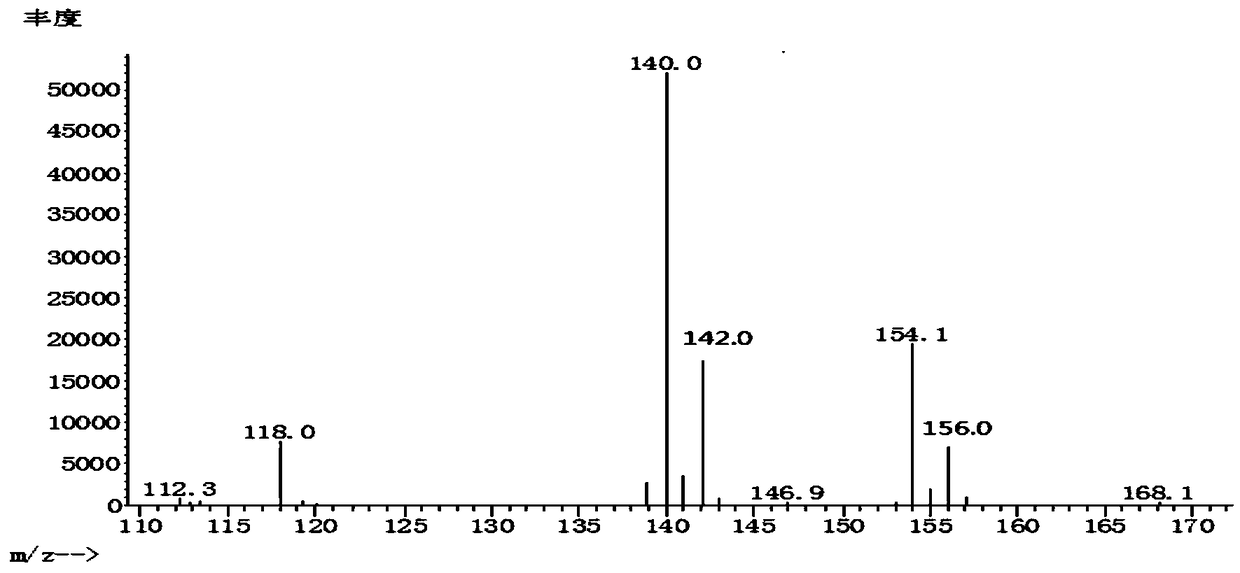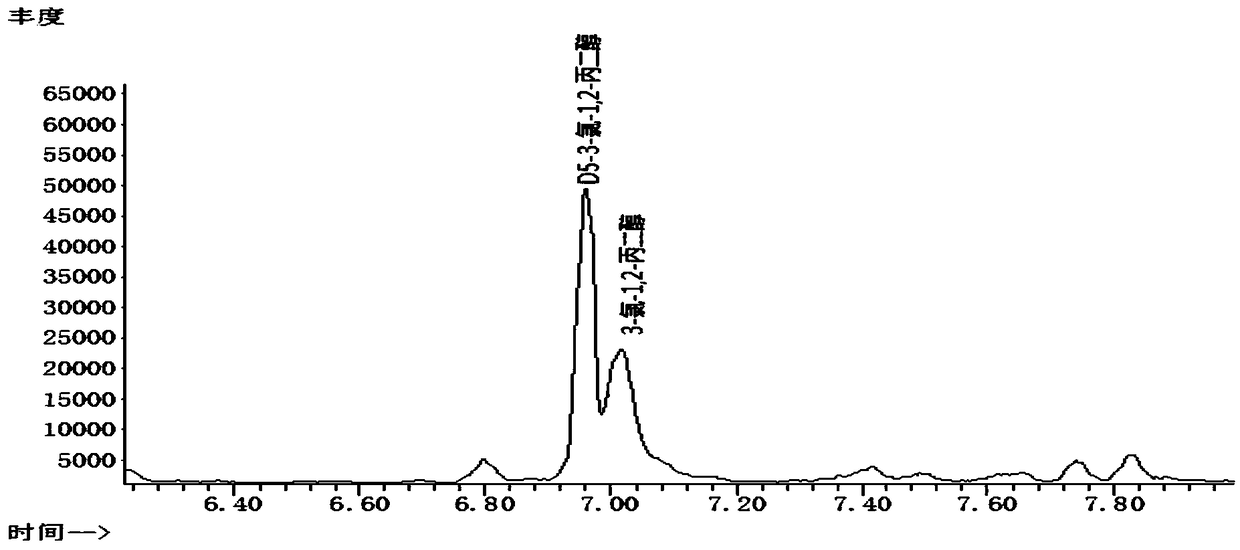Method for determining 3-chloro-1,2-propanediol in seasoning
A technology of propylene glycol and condiments, which is applied in the field of analytical chemistry, can solve the problems of high consumption of toxic organic solvents, complicated and time-consuming operations, and increased detection costs, and achieve the effects of easy promotion, low detection cost and high accuracy
- Summary
- Abstract
- Description
- Claims
- Application Information
AI Technical Summary
Problems solved by technology
Method used
Image
Examples
Embodiment 1
[0062] Embodiment 1, optimization of experimental method
[0063] (1) Optimization of pretreatment method
[0064] ① Optimization of extraction conditions
[0065] The solvent for extracting 3-MCPD from liquid seasoning should be able to meet the following requirements: 1. easy to separate from the water phase, 2. good solubility to 3-MCPD, after distribution, 3-MCPD and its content in the organic phase The content of the target should be sufficient to meet the detection requirements after derivatization. 3. If the extraction solvent needs to be removed, the solvent used should have a lower boiling point.
[0066] The results of screening common laboratory solvents such as ethanol, methanol, ethyl acetate, isopropanol, acetonitrile, acetone, methyl ethyl ketone, n-hexane, toluene, chloroform, ether and tetrahydrofuran show that alcohol solvents such as methanol and ethanol are not easy Separated from the water phase, isopropanol has a certain extraction efficiency and is eas...
Embodiment 2
[0073] Embodiment 2, method verification experiment of the present invention
[0074] (1) Linear range and correlation coefficient
[0075] Prepare a series of standard working solutions containing 0.6 μg internal standard and 0.008, 0.016, 0.06, 0.12, 0.4, 1.2 μg of 3-MCPD respectively, and perform detection according to the determined analysis conditions, and quantify the ions of the target substance with the internal standard substance. The ratio of the peak area of the ion is the ordinate (y), and the content of the target substance (x, μg) is used as the abscissa for linear regression, and the linear equation of 3-MCPD in the content range of 0.008-1.2 μg is y = 1.43 x+0.0071, the correlation coefficient (r) is 1.000, and the linear relationship is good.
[0076] (2) Recovery rate and precision
[0077] Blank soy sauce and chicken bouillon samples were used for addition and recovery experiments. The addition levels of soy sauce were 0.005, 0.02, and 0.40 mg / kg, and th...
Embodiment 3
[0082] Embodiment 3, soy sauce actual sample detection
[0083] (1) Preparation of solution
[0084] ① Saturated sodium chloride solution: Weigh sodium chloride, then add water, and use ultrasound to fully dissolve sodium chloride. The dosage ratio of sodium chloride to water is: 200g: 500mL;
[0085] (2) Preparation of standard solution
[0086] ①Preparation of standard stock solution: weigh 3-chloro-1,2-propanediol standard substance and internal standard D 5 -3-Chloro-1,2-propanediol was placed in volumetric flasks, and the volume was adjusted to the mark with ethyl acetate to obtain 1 mg / mL standard stock solutions, which were stored at -18°C in the dark;
[0087] ②Preparation of standard use solution: draw appropriate amount of 3-chloro-1,2-propanediol standard stock solution and D 5 -3-Chloro-1,2-propanediol standard stock solution in a volumetric flask, dilute to the mark with ethyl acetate respectively, and prepare a standard use solution with a concentration of 40 μg...
PUM
| Property | Measurement | Unit |
|---|---|---|
| recovery rate | aaaaa | aaaaa |
| recovery rate | aaaaa | aaaaa |
Abstract
Description
Claims
Application Information
 Login to View More
Login to View More - R&D
- Intellectual Property
- Life Sciences
- Materials
- Tech Scout
- Unparalleled Data Quality
- Higher Quality Content
- 60% Fewer Hallucinations
Browse by: Latest US Patents, China's latest patents, Technical Efficacy Thesaurus, Application Domain, Technology Topic, Popular Technical Reports.
© 2025 PatSnap. All rights reserved.Legal|Privacy policy|Modern Slavery Act Transparency Statement|Sitemap|About US| Contact US: help@patsnap.com



